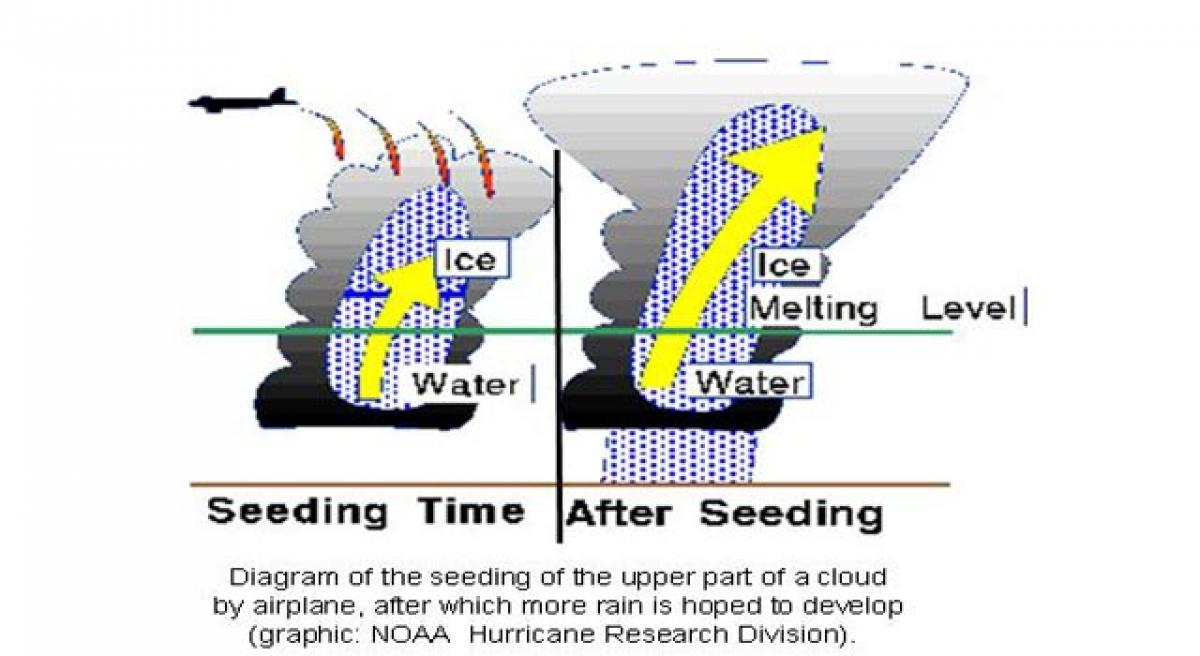Live
- Musk names Microsoft as defendant in amended lawsuit against OpenAI
- Vishwak Sen Shares His Disappointment After Shraddha Srinath Turned Down His Offer
- AP Chambers to organise 3-day Business Expo-2024
- Gold rates in Delhi today surged, check the rates on 15 November, 2024
- Collector Prasanthi emphasises transparency in sand supply
- Don’t be fooled by brokers, MLA advises farmers
- Gold rates in Visakhapatnam today surges, check the rates on 15 November, 2024
- Tirupati: Student commits suicide
- Lenovo launches high-end tablet K11
- Tirupati: Two women die in accident
Just In

Kerala Chief Minister Pinarayi Vijayan on Tuesday hinted that cloud seeding could be one possible measure to tackle the worst drought that Kerala has faced in a century. Vijayan said: \"Cloud seeding is one method to see that rains are artificially created... this phenomenon has been successfully tested at a few places.\"
Kerala Chief Minister Pinarayi Vijayan on Tuesday hinted that cloud seeding could be one possible measure to tackle the worst drought that Kerala has faced in a century. Vijayan said: "Cloud seeding is one method to see that rains are artificially created... this phenomenon has been successfully tested at a few places."
According to http://www.weatherquestions.com, cloud seeding is the process of spreading either dry ice, or more commonly, silver iodide aerosols, into the upper part of clouds to try to stimulate the precipitation process and form rain. Since most rainfall starts through the growth of ice crystals from super-cooled cloud droplets (droplets colder than the freezing point, 32 deg. F or 0 deg. C) in the upper parts of clouds, the silver iodide particles are meant to encourage the growth of new ice particles.
The history of cloud seeding has experienced uncertain results because it can never be known whether a cloud that rains after seeding might have rained anyway. This is because seeding is performed on clouds that look like they have some potential for producing rain. Reducing the intensity of hurricanes through seeding? nope.
In the early 1960's, the National Hurricane Center began a series of experiments in seeding of hurricanes to reduce their intensity. Since the most destructive hurricane winds are produced from hurricanes with the smallest diameter eyes, STORMFURY seeding flights tried to stimulate the growth of a new eyewall of convection outside the inner, more destructive eyewall.
Unfortunately, the project failed. It has since been determined that there are already an abundance of ice crystals in hurricane rain systems, so the production of new ice particles through cloud seeding probably has little if any effect. Silver iodide or dry ice work to promote rainfall by inducing nucleation – what little water is in the air condenses around the newly introduced particles and crystallises to form ice.
The ‘seeds’ can be delivered by plane or simply by spraying from the ground…Success has been claimed for trials in Australia, France, Spain and the US. In the United Arab Emirates, the technique is credited with the creation of 52 storms in the Abu Dhabi desert, while China boasts of having used the technology in reverse to keep the Beijing Olympic Games of 2008 dry, according to http://www.physics.org.

© 2024 Hyderabad Media House Limited/The Hans India. All rights reserved. Powered by hocalwire.com







